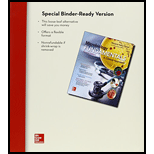
To explain:
The reason that normal biota of the GI tract seems to include a lot of diseases causing organisms.
Introduction:
Gastrointestinal tract or digestive tract is responsible for absorbing the nutrients and eliminating the waste. The alimentary canal provides a passage through which the food passes through our body. It also includes mouth, esophagus, stomach, small intestine, large intestine, rectum, and anus.
Explanation of Solution
Actinomycetes, Streptococcus, and Candida albicans are the microorganisms that live in the mouth. The mouth is also a home of protozoa such as Entamoeba gingivalis and Trichomonas.
Bacillus, Clostridium, Streptococcus, and Staphylococcus reside in the stomach. Large intestine contains microorganisms such as Bacteroides, Fusobacterium, Bifidobacterium, Clostridium, Streptococcus, Peptostreptococcus, Lactobacillus, Escherichia, and Enterobacter as well as fungi Candida albicans. E. coli is present in the gut of the gastrointestinal tract.
It is considered that most of the gastrointestinal gut biota is a disease-causing organism such as:
Candida albicans is yeast which is responsible for itching, swelling, and soreness of reproductive organs and causes white discharge from the vagina. The disease is termed as candidiasis.
Actinomycetes cause actinomycosis which is characterized by fever, weight loss, and a purple-reddish lump on upper neck and face.
Streptococcus, Staphylococcus, and Clostridium are the group of microorganisms that cause necrotizing fasciitis in humans. They release proteases and lipases which destroy the tissues beneath the skin.
Candida albicans, Streptococcus, Staphylococcus, Clostridium, and Actinomycetes are the pathogenic organisms present in the gastrointestinal tract.
To explain:
The reason for considering the biota of the GI tract as pathogens if they are normal biota.
Introduction:
Gastrointestinal tract or digestive tract is responsible for ingesting and digesting the food, absorbing the nutrients and eliminating the waste. The alimentary canal provides a passage through which the food passes in our body. It also includes mouth, esophagus, stomach, small intestine, large intestine, rectum, and anus.
Explanation of Solution
The normal biota of gastrointestinal tract involves Actinomycetes, Streptococcus, and Candida albicans. These microorganisms live in the mouth. The mouth is also a home for protozoa such as Entamoeba gingivalis and Trichomonas.
Bacillus, Clostridium, Streptococcus, and Staphylococcus reside in the stomach. Large intestine contains microorganisms such as Bacteroides, Fusobacterium, Bifidobacterium, Clostridium, Streptococcus, Peptostreptococcus, Lactobacillus, Escherichia, and Enterobacter as well as fungi Candida albicans. E. coli is present in the gut of the gastrointestinal tract.
Some of the microorganisms in the gastrointestinal tract are disease-causing pathogens such as Staphylococcus, Streptococcus, and Clostridium. This group of microorganisms is responsible for causing Necrotizing fasciitis in humans. The disease actinomycosis is caused by Actinomycetes, and yeast (Candida albicans) causes swelling, itching, and soreness of reproductive organs. These are normal biota present in the digestive tract but it also causes some diseases by acting as a pathogen.
The gastrointestinal tract contains some microorganisms such as Candida albicans, Streptococcus, Staphylococcus, Clostridium, and Actinomycetes, which perform a normal function in digestion but also causes infectious diseases by acting as a pathogen.
To explain:
The reason for considering the biota of the GI tract as normal if they are pathogens.
Introduction:
Gastrointestinal tract or digestive tract is responsible for ingesting and digesting the food, absorbing the nutrients and eliminating the waste. The alimentary canal provides a passage through which the food passes through our body. It also includes mouth, esophagus, stomach, small intestine, large intestine, rectum, and anus.
Explanation of Solution
Some microorganisms in the gastrointestinal tract are disease-causing pathogens such as Staphylococcus, Streptococcus, and Clostridium. This group of microorganisms is responsible for causing Necrotizing fasciitis in humans but is also involved in the community of microorganism which forms dental plaque (a biofilm that in moderate level protects the teeth). The disease actinomycosis is caused by Actinomycetes, and yeast (Candida albicans) causes swelling, itching, and soreness of reproductive organs. They are also involved in the community of gut microbiota to protect and help in digestion. E. coli helps in the synthesis of vitamin K.
The pathogenic bacteria present in the gastrointestinal tract add to the digestive functions and thus are considered to be normal instead of having pathogenic properties.
Want to see more full solutions like this?
Chapter 20 Solutions
Loose Leaf For Microbiology Fundamentals: A Clinical Approach
 Human Anatomy & Physiology (11th Edition)BiologyISBN:9780134580999Author:Elaine N. Marieb, Katja N. HoehnPublisher:PEARSON
Human Anatomy & Physiology (11th Edition)BiologyISBN:9780134580999Author:Elaine N. Marieb, Katja N. HoehnPublisher:PEARSON Biology 2eBiologyISBN:9781947172517Author:Matthew Douglas, Jung Choi, Mary Ann ClarkPublisher:OpenStax
Biology 2eBiologyISBN:9781947172517Author:Matthew Douglas, Jung Choi, Mary Ann ClarkPublisher:OpenStax Anatomy & PhysiologyBiologyISBN:9781259398629Author:McKinley, Michael P., O'loughlin, Valerie Dean, Bidle, Theresa StouterPublisher:Mcgraw Hill Education,
Anatomy & PhysiologyBiologyISBN:9781259398629Author:McKinley, Michael P., O'loughlin, Valerie Dean, Bidle, Theresa StouterPublisher:Mcgraw Hill Education, Molecular Biology of the Cell (Sixth Edition)BiologyISBN:9780815344322Author:Bruce Alberts, Alexander D. Johnson, Julian Lewis, David Morgan, Martin Raff, Keith Roberts, Peter WalterPublisher:W. W. Norton & Company
Molecular Biology of the Cell (Sixth Edition)BiologyISBN:9780815344322Author:Bruce Alberts, Alexander D. Johnson, Julian Lewis, David Morgan, Martin Raff, Keith Roberts, Peter WalterPublisher:W. W. Norton & Company Laboratory Manual For Human Anatomy & PhysiologyBiologyISBN:9781260159363Author:Martin, Terry R., Prentice-craver, CynthiaPublisher:McGraw-Hill Publishing Co.
Laboratory Manual For Human Anatomy & PhysiologyBiologyISBN:9781260159363Author:Martin, Terry R., Prentice-craver, CynthiaPublisher:McGraw-Hill Publishing Co. Inquiry Into Life (16th Edition)BiologyISBN:9781260231700Author:Sylvia S. Mader, Michael WindelspechtPublisher:McGraw Hill Education
Inquiry Into Life (16th Edition)BiologyISBN:9781260231700Author:Sylvia S. Mader, Michael WindelspechtPublisher:McGraw Hill Education





